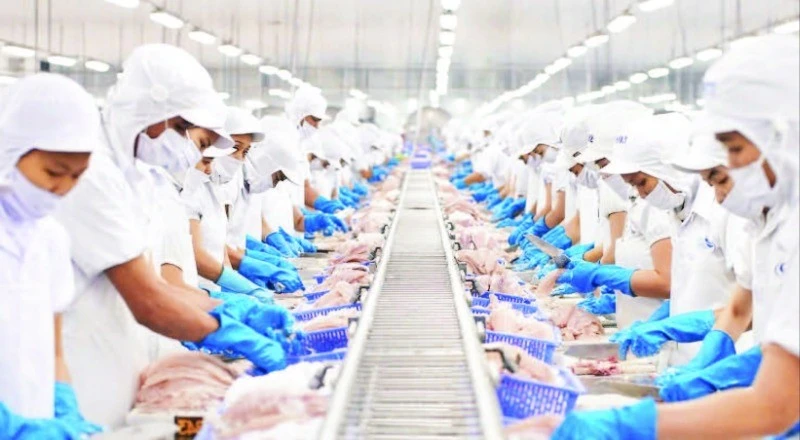Opportunity for restructuring Viet Nam’s tra fish industry
With an annual export value of around 2 billion USD, tra fish (pangasius) industry plays a pivotal role in making Viet Nam the world’s third-largest seafood exporter. However, the industry’s value chain still heavily relies on low value-added and minimally processed products.

Viet Nam’s tra fish exports are experiencing a marked recovery in 2025, with expectations of double-digit growth. Although countries such as India, Bangladesh, Indonesia, and Egypt also cultivate this species of catfish, Viet Nam’s tra fish remains the top choice for major global importers.
Annual output ranges between 1.5 and 1.7 million tonnes, contributing an average of 1.6 to 2.3 billion USD in export revenue. Notably, Viet Nam currently supplies over 90% of the world’s frozen tra fish fillets.
Thanks to its rich hydrology, stable water sources, and favourable climate, which are advantages not shared by all competing countries, the Mekong Delta has become one of the world’s largest tra fish farming regions. Key provinces such as Dong Thap, An Giang, Vinh Long, and Can Tho lead the way with tens of thousands of hectares of dedicated aquaculture land.
Viet Nam boasts hundreds of pangasius farms and processing facilities that meet international certifications such as ASC, BAP, and GlobalG.A.P. These certifications ease entry into demanding markets like the EU, the US, Japan, the Republic of Korea, and major international retail chains.
According to Nguyen Thi Thu Hang, an expert in tra fish market expert from the Viet Nam Association of Seafood Exporters and Producers (VASEP), a critical reason Viet Nam remains a preferred supplier is its vertically integrated value chain. From fingerling production and feed to farming, processing, distribution, and traceability - this integrated model ensures consistent supply, food safety, and uniform product specifications such as fish size and flesh colour.
According to Viet Nam Customs, from the beginning of 2025 to June 15, tra fish exports reached 915 million USD, an 11% increase compared to the same period in 2024. Significantly, the fastest growth came from deep-processed products, which brought in 24 million USD, a 59% increase year-on-year. Although this only accounts for 2.6% of total tra fish exports, it signals immense potential for value-added expansion.
To meet this growing demand, Vietnamese tra fish enterprises are rethinking the entire value chain. From ASC/BAP-certified hatcheries and farms to high-standard processing plants and cold-chain logistics, all components are being aligned with the goal of "deepening product value". Raw materials are now required to meet strict standards in terms of size and sensory quality to produce premium processed products.
At the 2025 North America Seafood Expo, one of the world’s largest seafood trade shows, Vinh Hoan Corporation unveiled a new lineup of deep-processed items such as pangasius surimi, breaded pangasius tray packs, and steamed pangasius dumplings, clearly signaling a shift toward premium product lines.
Evolving well beyond frozen fillets, Viet Nam has developed a highly diverse range of tra fish-based products, such as sliced tra fish, fish balls, fish cakes, frozen steamed fish, fish oil, and fish collagen. By-products such as fish skin, swim bladders, and fish fat are also fully utilised in the production of animal feed, pharmaceuticals, and cosmetics. This effective use of by-products has increased the added value of each ton of processed pangasius by 15% to 20%, offering a clear competitive advantage over countries that still primarily export semi-processed fish.
Amid increasingly fierce global competition, Vietnamese tra fish is not only maintaining its position but steadily moving up the value ladder. This success stems from a long-term vision, strategic investment, and a firm commitment to quality. The restructuring currently underway represents a rare opportunity to elevate the tra fish industry into a high-value and globally competitive industry.








